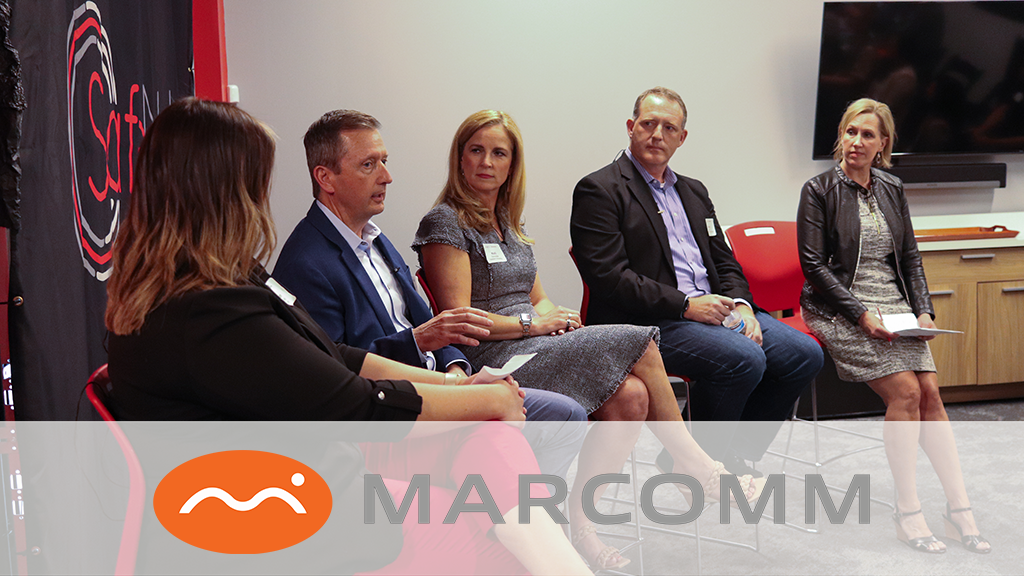In the last two years, flexibility has become a crucial part of the workforce across the globe. However, the word “flexible” often translates to “work from home” to corporate ears. Yet flexibility doesn’t always mean a WFH model. Flexibility can look entirely different from company to company, depending on the need. So then, what are a few other definitions of “flexible” and why is it crucial to the future of employment?
Check out this highlight of flexibility during our AMA event this year:
Attracting Talent
Ever since the COVID-19 pandemic, the increase in flexible and remote work scenarios has caused many corporations to reconsider how flexibility can be re-introduced to “traditional” positions within their companies. Andy Dulka, CIO of Restaurant Technologies, highlighted this in a recent AMA Hiring Strategies blog.
Speaking about drivers within the company, he said, “We’ve had to flex to understand the human needs in those roles. We go talk to our most productive people in that role and we ask: ‘Why are you here? Why are you staying? What gets you excited about this?’”
Flexible work is not only beneficial to an organization, but in the coming years it will be necessary for attracting new candidates. A CNBC article included a report from Apollo Technical, an engineering and IT agency, which said that 72% of Americans prefer a flexible work model over returning to the office full time.
A report by Owl Labs released a study which said that 90% of U.S. employees were as productive or even more productive when they worked at home versus the office. In the coming years, flexible work options will be a must for attracting new candidates.
The Range of Flexibility
From an employer standpoint, flexibility can look like:
- Employee opportunities for more time off or career breaks (like sabbatical leaves)
- Alternative schedules
- Flexible work locations
- Introducing new incentives like tuition reimbursement, bonuses, gifts, etc.
- Standardizing mental health care within the organization
From an employee standpoint, flexibility can look like:
- Shifting around daily tasks to respond to immediate client needs
- Arriving to work and leaving work at flexible times (this is especially favored by parents of small children)
- Choosing work shifts rather than being assigned to them
- Split home/office schedule
Contract staffing is one way that Marcomm offers employees flexible work. To learn more about contract staffing, read Marcomm’s blog: “Contract Staffing: A Vital, Flexible Marketing Solution”
Benefits of Workplace Flexibility
Workplace flexibility has countless benefits for employers and employees alike. For one, flexibility promotes a better sense of self-awareness and self-care. When employees take care of themselves and feel looked after by their employer, they tend to stay at a company longer. An employee’s self care ultimately results in less sick days, lessened stress, increased productivity and a better retention rate.
Increasing productivity is also another factor in flexibility. Harvard Business Review found that at home workers were not only more productive, but less likely to quit their jobs.
Workplace flexibility also promotes a greater sense of diversity, since employees likely come from various cities, or even states. Gender, ethnic and cultural diversity all play important roles in having a well-rounded and productive team, as stated in a 2017 study by McKinsley.
Workplace flexibility not only benefits the employee, but the employer as well. When a company is more flexible with what they offer, they ultimately end up with diversified talent instead of consistent carbon copies of the same individuals. For example, a company with a flexible work schedule can hire stay-at-home moms, whereas traditional companies could not.
Remote working also saves money and gasoline expenses related to a daily commute. On the far side of the spectrum, an entirely remote organization will save on traditional office expenses. This includes a building lease, electricity, office supplies, bathroom products, cleaning supplies, break room/coffee essentials, and other costs associated with keeping the doors open.
Patterns of workplace flexibility: From Renaissance to Post-Pandemic
Surprisingly, the Renaissance Era is often credited with the invention of the modern workspace as we know it. For hundreds of years since, communication and collaboration have been the main reasons why employees needed a central environment to gather and complete projects. Fast forward to the 1980s and 1990s, the ability to work remotely significantly increased with two crucial inventions: the internet and public wifi.
The introduction of flexibility into the workplace made a big splash because of how normal the corporate environment and “9 to 5” job routine had become in the last 30 years. Unhealthy downsides to the corporate work environment–such as low productivity, diminished perception of time, and a lack of flexibility–were even highlighted in the early 2000’s TV show, The Office.
However, with the jump in late 2010 technologies like Zoom and Monday.com, working entirely from home or flexing work hours has not only become plausible, but in some cases it is preferred. Even before the pandemic, the value of flexibility was on the rise in the modern workforce. A 2017 study by ManPowerGroup found that 40% of candidates across the globe valued flexibility among the top three factors of choosing a company.
If you’re looking for flexibility options, check out open positions at Marcomm! Looking for flexible marketing options for your company? Look at our Fractional Marketing page to learn more. Or, read our blog, “Fractional Teams Make Outsourcing Marketing Easy.”

